 |
Child Abuse Prevention and Awareness for Supervisors and Managers |
1.50 |
If a staff member or volunteer in a child-related program approaches his or her supervisor with a case of suspected child abuse the supervisor must know how to handle the situation to ensure the safety of everyone in the program. This course provides supervisors with a wealth of information about how to recognize and prevent child abuse within program walls, and furthermore, the steps to take when a situation of child abuse arises. In addition, you will learn best practices for yourself, your staff and your organization.
|
 |
Infectious Diseases: Causes and Symptoms |
1.00 |
An infectious disease is an illness that is caused by organisms such as bacteria, viruses, fungi, and parasites. Many of these organisms live in or on our bodies, and are normally harmless. But under certain circumstances, they can cause disease.
Course Learning Objectives:
- Describe infectious disease, and the ways in which germs that can cause infectious disease are spread.
- Identify common symptoms of infectious diseases, and why young children are vulnerable to infectious diseases. |
 |
STEM and You |
1.00 |
As early childhood professionals, we’ve all heard the term STEM. It stands for Science, Technology, Engineering, and Mathematics. But do you think you would recognize STEM in action if you saw it? Let’s find out!
Course Learning Objectives:
- Define STEM in the context of early childhood education.
- Recognize the impact of a teacher’s attitude toward STEM on their instructional practice. |
 |
School-Age Health Guidelines to Promote Healthy Eating and Physical Activity |
0.34 |
At the end of this course, participants will be able to define the terms overweight and obesity, know health consequences of childhood obesity, and explain the purpose of CDC’s School Health Guidelines to Promote Healthy Eating and Physical Activity. They will also identify at least two healthy eating and two physical activity policies or practices that can be implemented in schools to address obesity. Participants will also be able to create guidelines to address problems in their area as well as find stakeholders that need to be informed of the guidelines.
|
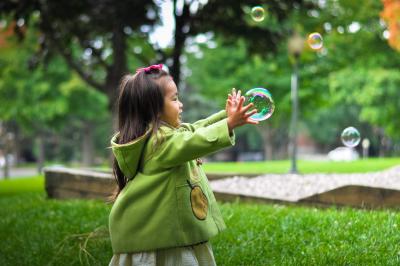 |
Basic Health & Safety Requirements for Certification |
6.00 |
Best practices and standards for health and safety are the foundation of quality child care. Meeting the basic health and safety needs of all children sets the stage for positive child outcomes.
This health and safety orientation module provides an overview of the basic health and safety requirements and best practices in nine of the topic areas outlined in the Child Care and Development Block Grant (CCDBG) Reauthorization of 2015. The topics are as follows:
Safe spaces; Transportation safety; Handling and storage of hazardous materials; Emergency preparedness; Prevention and control of infectious disease; Food and allergic reactions and how to respond; Administration of medication; Shaken baby syndrome/abusive head trauma; Safe sleep and SUIDS prevention.
This course is designed to meet your professional development needs. It can be taken as a stand-alone learning event, or as part of a broader early childhood education curriculum. In addition to state child care regulations, there may be other health and safety measures required by your municipality, township, or county. Check with county or local offices for information on local health and safety requirements. |
 |
Social-Emotional Learning, Character Building & Enhancing Quality |
2.00 |
By the end of this course, you will be able to:
Strengthen your understanding of the social-emotional learning and character building that expanded learning programs support.
Be able to articulate what social-emotional learning and character development looks like in children and youth.
Identify the connection between quality standards and social-emotional learning and character development. |
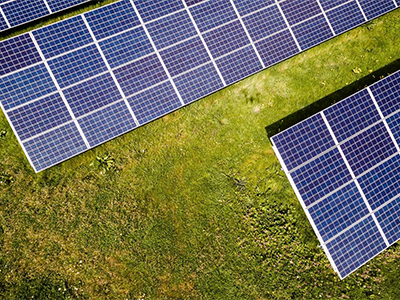 |
Become an Energenius® |
2.00 |
CalSAC has partnered with the Pacific Gas & Electric Company (PG&E) to bring the Energenius® Out-of-School Time Program to our online training platform. This FREE environmental stewardship curriculum is designed to engage children and youth to think about how they use energy, how energy is measured, paid for, and ways to save energy. Children and youth will understand how they can help reduce the impacts of energy use and production on the environment, and also practice influencing others to take energy-saving actions. Additionally, the curriculum is uniquely and intentionally designed to engage families in energy and water conservation habits.
Become an Energenius® is Activity Guide #4 in the 4-part Energenius® Out-of-School Time Program. The curriculum and activities are designed to engage children and youth to think about how they can save energy, how to recycle, reduce and reuse, and actions they will take to promote energy efficiency in their homes and community. This course will prepare participants to deliver the activities from the Become an Energenius® Activity Guide as well as sharing energy saving resources with families. |
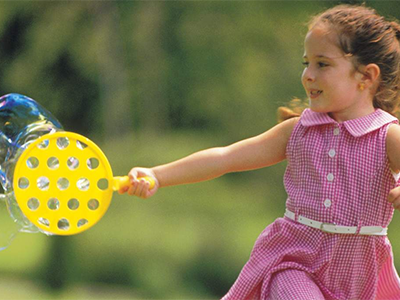 |
Energy and the Environment |
2.00 |
CalSAC has partnered with the Pacific Gas & Electric Company (PG&E) to bring the Energenius® Out-of-School Time Program to our online training platform. This FREE environmental stewardship curriculum is designed to engage children and youth to think about how they use energy, how energy is measured, paid for, and ways to save energy. Children and youth will understand how they can help reduce the impacts of energy use and production on the environment, and also practice influencing others to take energy-saving actions. Additionally, the curriculum is uniquely and intentionally designed to engage families in energy and water conservation habits.
Energy and the Environment is Activity Guide #2 in the 4-part Energenius® Out-of-School Time Program. The curriculum and activities are designed to engage children and youth in understanding how energy is produced, where energy comes from, and some impacts of energy use and energy production on the environment. This course will prepare participants to deliver the activities from the Energy and the Environment Activity Guide as well as connect families to resources to help save energy and money. |
 |
Energy and You! |
2.00 |
CalSAC has partnered with the Pacific Gas & Electric Company (PG&E) to bring the Energenius® Out-of-School Time Program to our online training platform. This FREE environmental stewardship curriculum is designed to engage children and youth to think about how they use energy, how energy is measured, paid for, and ways to save energy. Children and youth will understand how they can help reduce the impacts of energy use and production on the environment, and also practice influencing others to take energy-saving actions. Additionally, the curriculum is uniquely and intentionally designed to engage families in energy and water conservation habits.
Energy and You is Activity Guide #1 in the 4-part curriculum Energenius® Out-of-School Time Program. The curriculum and activities are designed to engage children and youth to think about how they use energy, how energy is measured and paid for, and ways to save energy. This course will prepare participants to deliver the activities from the Energy and You Activity Guide as well as connect families to resources to help save energy and money. |
 |
Water and Energy |
2.00 |
CalSAC has partnered with the Pacific Gas & Electric Company (PG&E) to bring the Energenius® Out-of-School Time Program to our online training platform. This FREE environmental stewardship curriculum is designed to engage children and youth to think about how they use energy, how energy is measured, paid for, and ways to save energy. Children and youth will understand how they can help reduce the impacts of energy use and production on the environment, and also practice influencing others to take energy-saving actions. Additionally, the curriculum is uniquely and intentionally designed to engage families in energy and water conservation habits.
Water and Energy is Activity Guide #3 in 4-part Energenius® Out-of-School Time Program. The curriculum and activities are designed to engage children and youth to think about water – where it comes from, how it’s used, and how to conserve this natural resource. This course will prepare participants to deliver the activities from the Water and Energy Activity Guide as well as help children and youth bring water saving resources home. |
 |
I Am: Supporting Self-Awareness and Self-Management |
2.00 |
Children and youth develop social-emotional skills and character over time and through a variety of experiences.
Expanded Learning Programs strongly support three foundational areas of Social-Emotional Learning and Character Building:
- I AM (Interpersonal Connections)
- I BELONG (Interpersonal Connections)
- I CAN (Belief and Mindset)
This course focuses on the I Am skills.
By the end of this course, you will:
- Understand how young people's responses affect personal emotion and behavior.
- Learn how group agreements can support self-awareness and self-management in children and youth.
- Learn strategies and resources to support I Am skill building with children and youth. |
 |
Cyberbullying |
1.00 |
Cyberbullying is bullying that takes place over digital devices like cell phones, computers, and tablets. Cyberbullying can occur through SMS, text, and apps, or online in social media, forums, or gaming where people can view, participate in, or share content. Cyberbullying includes sending, posting, or sharing negative, harmful, false, or mean content about someone else. It can include sharing personal or private information about someone else, causing embarrassment or humiliation. Some cyberbullying crosses the line into unlawful or criminal behavior.
In this course, you will:
• Learn the definition of cyberbullying
• Discover tactics on preventing cyberbullying
• Discover tips on communicating with parents and teachers, and how to report instances of cyberbullying |
 |
Development and Characteristics of Learners for Teachers |
1.00 |
Development and Characteristics of Learners will assist you in fostering a solid understanding of how children develop and the disability categories that may impact their learning. This course will also help you gain invaluable insight into ways you can support children and meet their needs. |
 |
HEPA Standards 2.0 and the Self-Assessment Tool |
1.00 |
In 2011 the National AfterSchool Association adopted standards for healthy eating and physical activity (HEPA) in out-of-school time. In 2018, the HEPA Standards were updated to Version 2.0.
This interactive e-learning course, commissioned by the Kentucky Out-of-School Alliance (KYOSA) and designed by CypherWorx, will explain how the HEPA Standards were created and how they should be used, as well as presenting the Standards in their entirety. We will also cover the HEPA Standards 2.0 Self-Assessment Tool and how to use it. |
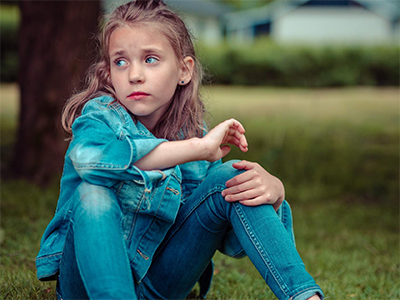 |
Stop Bullying |
1.00 |
In this course you will learn the role kids play in bullying, who is at risk, warning signs and effects of bullying, and the targeted groups of bullying - race, religion, LGBTQ, and youth with disabilities. |
 |
21st Century Skills and Play |
1.00 |
In this course, you will identify skills considered to be essential for success in the 21st century, and examine the critical connection between these skills and academic learning. You will also explore how one Key Learning Area from Learning Standards for Early Childhood - Approaches to Learning through Play - can help you promote the development of 21st Century Skills in the children with whom you work. |
 |
21st Century Skills in Young Children |
1.00 |
In this course, you will identify skills considered to be essential for success in the 21st century, and examine the critical connection between these skills and academic learning. You will also explore how one Key Learning Area from Learning Standards for Early Childhood - Social and Emotional Development - can help you promote the development of 21st Century Skills in the children with whom you work. |
 |
Adult and Child CPR |
2.00 |
In this course, you will learn how to properly perform Adult and Child CPR that may someday enable you to save someone's life. |
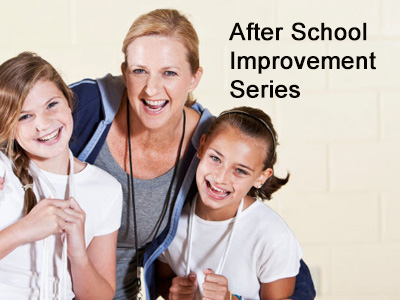 |
After School Improvement Series: Emergency Action Plans |
0.50 |
Like all other early childhood and school-age settings, after school programs need to consider how they prepare for and respond to emergency situations, from natural disasters, like storms, earthquakes, tornados, flash floods, or volcanic eruptions; fires; power outages; missing children; or acts of violence, including active shooter situations. Some emergency situations may require evacuation, while others may initiate a lock down, or shelter-in-place. The best way to prepare for emergency situations is to plan for them. We can do this by considering the kinds of emergency situations we might encounter, and then developing a series of procedures and protocols for responding to them. Your program’s Emergency Action Plan sets out your role and responsibilities should any of these emergencies occur.
|
 |
STEM and Learning Standards |
1.00 |
STEM is an intentional, integrative approach to teaching and learning that can occur across all knowledge areas; it is not a specific curriculum.
The STEM approach focuses on providing opportunities for students to explore and develop a comprehensive set of concepts, competencies, and thinking skills.
STEM competencies include a vocabulary rich in the language of science, technology, engineering and math—words like hypothesis, gravity, buoyant, balance, temperature, and battery. STEM competencies also include basic principles of engineering, like problem-solving and planning; of science, like experimentation and observation; of technology, like using tools to complete both a task and solve real world problems; and of math by recognizing that basic principles of math are part of everyday activities, like comparing and contrasting, counting, and dividing a whole to create equal parts.
Course Learning Objectives:
Demonstrate how learning standards for early childhood promote the development of STEM concepts, competencies, and thinking skills. |
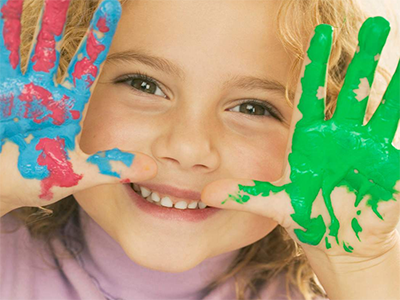 |
STEM and Supportive Practices |
1.00 |
STEM is an intentional, integrative approach to teaching and learning that can occur across all knowledge areas; it is not a specific curriculum. The STEM approach focuses on providing opportunities for students to explore and develop a comprehensive set of concepts, competencies, and thinking skills.
In this course, we’ll see how the Supportive Practices found in Learning Standards for early childhood promote the development of STEM concepts, competencies, and thinking skills.
Course Learning Objective:
- Use the supportive practices to promote the development of STEM concepts, competencies, and thinking skills. |
 |
After School Improvement Series: Outdoor Environments |
0.50 |
The After School Improvement Series: Outdoor Environments course will:
Describe different types of outdoor environments, along with the opportunities and challenges each one offers.
Discuss the role outdoor environments play in encouraging children to be active, while promoting a range of different experiences.
Identify the steps you can take to ensure that the outdoor environment is safe and accessible for all children.
Explore how outdoor environments can be used to extend learning opportunities found in indoor environments.
|
 |
The Indian Child Welfare Act |
1.00 |
The purpose of the Indian Child Welfare Act (ICWA) is to protect the rights of Native American communities and prevent Native American children from being unjustifiably removed from their families. This course will give you a general knowledge of how ICWA contributes to the preservation of Native American culture. |
 |
Presentation Methods and Debriefing Activities |
2.00 |
There is no "one size fits all" approach to working with children and youth, and this is especially true when it comes to how we present and debrief activities. During this course, participants will understand the importance of the delivery and debriefing of an activity to help children and youth make meaning, as well as some specific methods that can be incorporated into the program right away. |
 |
Attention-Deficit/Hyperactivity Disorder (ADHD) |
0.50 |
This course covers Attention-Deficit/Hyperactivity Disorder, also known as ADHD. A key discussion point of this course is whether ADHD is the wandering of attention, which is a trait, versus the deficit of attention, which is a disorder. We'll cover topics that include what ADHD is, its characteristics, the signs of ADHD, and possible medications or accommodations. It is just one out of many educational courses we offer. This course will help you develop new knowledge about children and help you better understand your role. |


























